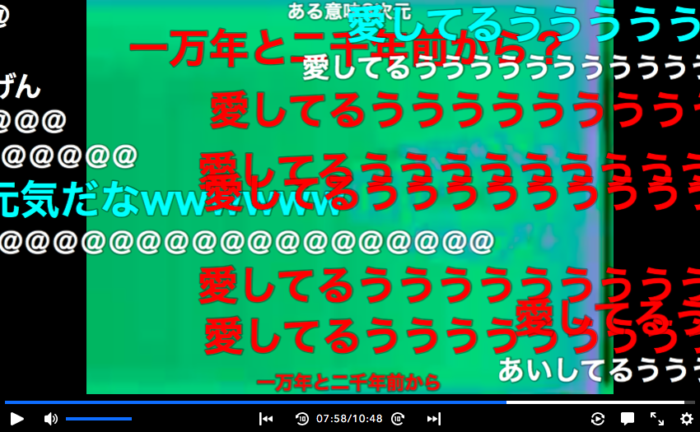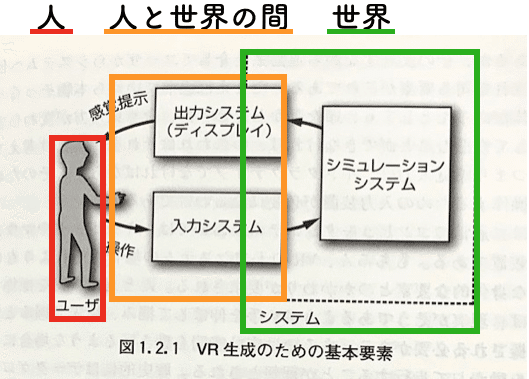Hello 🙌
- Bluemo / @blu3mo / Aoyama
- Studying Computer Science and Philosophy at Columbia University in New York.
- Interested in “how virtual reality should be” and “how to implement it”
- Thinking about defining a vision of the world through a philosophical/humanistic approach and then considering specific implementation methods in CS/engineering
- Thinks this is super cool and loves it
- Topics to discuss
- In our world, “time” is not as smooth as we think
- Dominance of Western modern and mechanical time
- By considering the concept of virtual time, it is possible to think about sharing smooth time
- Introduction of related creations
- In our world, “time” is not as smooth as we think
The concept of “time” in this world is not smooth
-
Before modern times (roughly)
- Each city had its own unique “time”
- Image: Clock towers in each city~
- Diverse models of time based on culture
- Linear time, cyclical time, timeless time
- Anthropologically, in South America it’s like this, in India it’s like that
- Mechanical time, time revolving around the rhythm of the sun
- Linear time, cyclical time, timeless time
- Each city had its own unique “time”
-
After modern times
- People became more interconnected
- Trains traveling between cities
- Western modern view of “time”
- Train schedules, school timetables, factory schedules
- “Appointments”
- “Deadlines”
- Synchronous economic transactions
- Synchronized to microseconds
- Complete sharing requires control and constraints at the “core”
- On the Concept of ‘Modern Time’
-
“This socially constructed artificial time has come to encompass everything, and as a result, it seems as if it were time itself, as if no other time existed.”
- Everyone thinks of time as something “quantitatively representable” and “universally shared”
-
- People became more interconnected
-
Time before modern times -> Time after modern times -> Smooth time
-
The fundamental framework of “time” in this world is not smooth
- Troubling
- Alienation due to the modern concept of time
How to make “time” smooth?
- Problem: The physical world’s time is not smooth to begin with
- As a result, communication has only two options: “synchronous” or “asynchronous”
- Real-time classes vs. On-demand classes
- Phone calls vs. Emails
- Solution: Create a more flexible “time” artificially
- "Virtual time"
Thinking about virtual “time”
- Here, virtual does not have the connotation of “fictional” or “illusory”
-
Virtual: “Not actually existing but producing some effect essentially.”
- It has a positive connotation of having an essential effect
- It’s not about real vs. virtual fake
- It’s more like imagining the existence of “base reality,” “virtual reality 1,” “virtual reality 2,” etc., in parallel
-
- Capturing the “essence” of time and reconstructing it with computers results in “virtual time”
- The “essence” is arbitrary and diverse, with various aspects
- Mental models of time structure
- Linear, cyclical
- Is there a future, is it eternal?
- Experience of the “speed” of time
- Causal relationships in the world
- Order of cognition
- Physical time-based synchronization (a state where two-way communication is possible)
- Pseudo-synchronization (a sense of sharing time)
- Mental models of time structure
- Something created at a previous VR hackathon:
- It doesn’t have to be in VR specifically
- Comments on Nico Nico Douga-

- The “essence” is arbitrary and diverse, with various aspects
- Created at Untrodden 2020, kineto
- An online teaching platform
- Allows users to move along the timeline of a video, make annotations, and add sticky notes
How to create a smooth flow of time?
- Elastic Synchronization
-
A system that synchronizes users asynchronously watching content by automatically adjusting playback speed
-
- Imagine the viewing position on a video’s timeline
- Synchronization occurs when watching the same part, while asynchrony occurs when users are at different points
- Smoothly transitioning between synchronization and asynchrony on a virtual timeline
- At one moment, Person A and Person B are synchronized, but in the next moment, Person B is synchronized with Person C, for example
Why is smoothness important?
-
Without the constraint of “sharing with everyone,” more diverse models of “time” can be considered
-
For instance, for large lectures or meetings, a “branching time” model might be more suitable
- Common challenges in discussions include:
- Having additional information to share but not wanting to dominate the discussion
- Missing the timing to contribute an idea
- Having questions or opinions on a past topic but hesitating to bring it up
- Needing quick responses in discussions, requiring spontaneity and quick thinking
- A one-dimensional, fully synchronous Turn-Based Communication environment with such challenges doesn’t seem ideal (blu3mo)
- Therefore, the desire to move away from turn-based discussions to a branching environment
- —> ParallelTalk / Proposal for Non-Turn-Based Communication with Voice
(Image)
- Common challenges in discussions include:
-
For student interactions, a class where students can move backward and forward in time might be more suitable
- Being able to rewind a bit when missing information makes learning easier
- Combining the ability to move back and forth in time with synchronous communication aims to blend the best of real-time and on-demand learning
- —> Created at Untrodden 2020, kineto
-
Elastic Synchronization: A system that synchronizes users asynchronously watching content by automatically adjusting playback speed
-
When managing personal progress, a “subjective time perception” might be more suitable than a mechanical, Western modern clock
- Having a mechanism that allows freedom from the constraints of time while enabling synchronization with others would be beneficial
- Alternatively, leveraging the rigidity of a clock for tasks like Method for Improving Processing Speed of Simple Tasks by Controlling Clock Display Time Speed
-
For music performance, a “circular time-space” might be more appropriate
- Extending the concept of a Loop Station into a spatial-temporal dimension
-
In a “two-dimensional time,” unique forms of novels and music could be created
-
In a “relativistic time” or “higher-dimensional space,” new games/sports with unique gameplay might emerge
- Concepts like Superhuman Sports
- For example, a recent creation by blu3mo, a VR experience called Lorentz - Special Relativity in VR
- https://scrapbox.io/files/64627c8e1d437b001c396ff8.mp4
- Where the world stretches and time slows down- There seems to be multiplayer sports games that can be played in a virtual spacetime influenced by theories of relativity.
-
Games like 5D Chess are also interesting.
-
@blu3mo: “Streaming work to your future self” seems quite interesting and convenient.
-
- Always display what you were doing 10 minutes ago in the bottom right corner of the screen.
-
- Understand if “past self was focused” or “past self was slacking off by surfing the internet.”
-
- Create a sense of tension of being watched by others through the image of “future self” as that other person.
-

-
Creating “strange spacetime” itself is not the goal.
- For example, even if an experience of 100-dimensional time could be created (which would be extremely fun), the joy does not lie in that alone.
- In fact, it often seems more confusing when things get overly complex.
- The goal is to be able to present information in an optimal spacetime framework tailored to the situation and preferences (blu3mo).
- I believe that various models could be useful depending on the needs, such as “optimal spacetime model for school lectures” or “optimal spacetime model for music,” without being constrained by limitations.
If the appropriate system and interface can be implemented, a “virtual time” can be created.
- Considering the model of Diagram of VR system as a basis.
 (source)
(source)- Required elements:
- A system to create virtual spacetime in the world of computers.
- An interface that allows humans to perceive and interact with it as spacetime.
- System:
- For example, a data structure like CRDT that enables collaborative editing at different positions on a virtual timeline.
- For instance, if someone edits the world in the past on a virtual timeline, it will affect the future on the timeline.
- When this happens, a mechanism to handle data without conflicts is necessary.
- Commutative data types seem necessary to avoid conflicts and facilitate collaboration across virtual time.
- For instance, if someone edits the world in the past on a virtual timeline, it will affect the future on the timeline.
- For example, Elastic Synchronization (a physical law like “universal gravity” in the time direction on the virtual timeline).
-
It could be called “universal gravity” in the time direction rather than in space.
- Manipulating arbitrary connections with elastic synchronization
-
- For example, Physics simulator in 4-dimensional space.
- Physics in an expanded virtual world with spatial dimensions.
- For example, a data structure like CRDT that enables collaborative editing at different positions on a virtual timeline.
- Interface:
- For example, mechanisms to render 4-dimensional (x, y, z, t) meshes or SDF data formats (4D Rendering).
- Traditional 3D rendering systems naturally convert 3D models into 2D.
- This makes it challenging to create VR special relativity simulators like Lorentz - Special Relativity in VR.
- So, I’m currently trying to create a mechanism for 4D Rendering (blu3mo).
- For example, interfaces to navigate branching virtual time.
- Something like VRGit: A Version Control System for Collaborative Content Creation in Virtual Reality seems close.
- For example, 4D UI, interfaces transcending time.
- For example, interfaces handling spacetime fused like time and space.
- I wonder how far a “virtual spacetime” can be presented within the limits of human cognition.
- Maybe presenting a 100-dimensional spacetime is impossible, but striving for a branching time or a 4-dimensional spacetime seems feasible.
- If we can present a 3D world on a 2D display, we should be able to present a 4D world on a 3D display (blu3mo) (this is sophistry).
- For example, Interface that Coexists Real-Time and Slow Motion is very interesting and I like it (blu3mo).
- Maybe presenting a 100-dimensional spacetime is impossible, but striving for a branching time or a 4-dimensional spacetime seems feasible.
- For example, mechanisms to render 4-dimensional (x, y, z, t) meshes or SDF data formats (4D Rendering).
The end.
- Scrapbox (like a second brain)-
- /blu3mo-public
- Things left unsaid
- A discussion about “time” expanded into the concept of “space-time”
- I want to engage in discussions with people and create things 🙌
- Mechanisms like virtual time-based economy and consensus-building, seem interesting.




